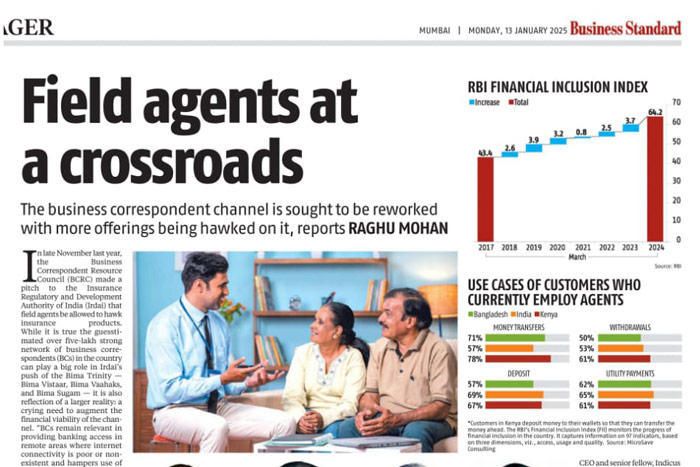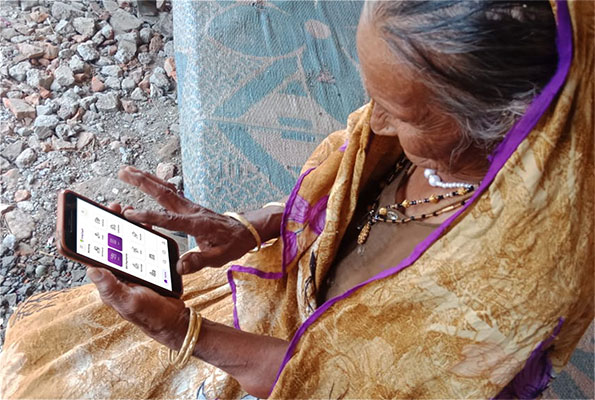The challenges for banking services and fintech in the year that was, and the outlook for fintech in 2024.
As 2023 draws to a close, it’s the perfect time to pause and look back at how the fintech and financial services sector in India fared. Is financial inclusion a buzz word that is now waiting for a new one to take its place or does it still hold sway? Will digital banking still prevail and will Generative AI cover new ground in digital banking services? How will the underserved be brought into the fold of financial inclusion in the new year?
This year has been pivotal in shaping the industry’s trajectory, raising questions about the future of financial inclusion, the role of digital banking, and the potential of Generative AI in enhancing banking services. The industry stands at a crossroads, looking back at achievements while anticipating the challenges and opportunities of 2024.
2023: Big opportunities, Big strides
The year saw a surge in UPI transactions by 62% in the first half, compared to the same period in 2022, with a record INR9.3 billion transactions in June 2023, primarily driven by Person-to-Merchant transactions. The Fintech Association for Consumer Empowerment (FACE) reported a 61% increase in credit disbursals in Q4, amounting to 1.9 crore loans. The disbursement value of loans also grew by 129% for FY’23, showcasing the growing reach of fintech.
These statistics collectively indicate a robust and rapidly growing fintech ecosystem in India. The significant growth in UPI transactions and credit disbursals reflects that consumer trust and reliance on digital financial solutions is also on the rise.
The commercial credit portfolio in the MSME sector witnessed a 15% year-over-year growth, a pretty good number that suggests democratization of financial services reaching deeper into India’s multi-layered economic landscape. The ‘micro’ segment’s 23% YoY growth rate, particularly in states like UP, Karnataka, Telangana, and Haryana, underscores the expanding footprint of fintech in regional markets.
The table below clearly indicates that consumption financing was way ahead, followed by vehicle loans, collateral loans and agri loans. At FIA, our banking agents also stepped up financial literacy efforts, demonstrating how sensible credit, savings or investment in Insurance could lead to long-term financial wellbeing.
| First Origination | Borrower % |
|---|---|
| First Loan in Consumer | 78% |
| First Loan in Commercial | 14% |
| Same time | 8% |
| Product | Borrower % |
|---|---|
| Consumption Loans | 58% |
| Vehicle Loans | 42% |
| Mortgage Loans | 34% |
| Agri Loans | 14% |
| Other Loans | 63% |
Overall, these developments emphasize the sector’s commitment to long-term financial wellbeing of citizens.
The Role of Government and Fintech Innovators
2023 was a landmark year for financial inclusion, with government initiatives like PMJDY and UPI gaining significant traction. The rise in smartphone penetration has further facilitated access to digital financial services, especially in rural areas. For perspective, PMJDY accounts have grown 3.4X from 2015 to 50.09 Cr in August 2023. Even more heartening is that 56% of these account holders are women and ~67% accounts are from rural and semi-urban areas. Deposits have also grown 13X from 2015 to cross INR 2,03,505 Cr.
Companies like Paytm, PhonePe, BharatPe, and KreditBee have played significant roles in driving financial inclusion, many of them expanding their array of services from digital payments to insurance and micro-loans. FIA, as a leading social impact fintech, has also made remarkable contributions with its extensive network of Business Correspondents (BCs), 18% of them women, providing doorstep banking services to 95% of the Indian population, covering particularly those in rural, far-flung, and other underserved locations.
Fintech in 2024: The Road Ahead
The convergence of financial inclusion and financial wellbeing will be a key trend in 2024. Fintech will continue to play a crucial role by developing tools and solutions that empower individuals to manage their finances effectively and achieve their financial goals. Looking ahead, the key focus areas for 2024 will be on:
- Accessibility: Numerous factors including physical infrastructure, distance, mobility and high cost of financial services could be prohibitive for the underserved. This can be overcome to some extent by expanding access to financial services through offline channels and vernacular language support. For the latter, the use of Large Language Models for India’s regional languages would be vital.
- Availability: Fintechs, P2P lending players, and MFIs could increase the range and customization of financial products and services available to underserved populations through digitization.
- Usage: Key players in the ecosystem, both private and public, must initiate and run financial literacy programs and adopt user-friendly digital interfaces. Only when we demystify and simplify financial services can those on the fringes of the digital economy be empowered to make informed financial decisions and use digital financial services effectively.
- Affordability: Using alternative data sources such as mobile data usage, digital footprint and online behavior patterns as valuable indicators of credit worthiness can help make financial services affordable for low-income populations through innovative pricing models such as micro-investment options, low-cost insurance, accessible credit facilities, etc.
- Predictability: Establishing collaborations with other service providers such as telecom operators, e-commerce platforms and utility companies could provide alternative data sources which could help leverage multiple data points to create a predictability framework – from credit worthiness to recoveries, ease of giving credit due to availability, and verifiable documentation or fraud prevention.
- Cybersecurity and data privacy: The rise in data breaches, cyber threats and loss of customer data will continue to be areas of major concern and top priority for banks and financial institutions. Fintechs will continue to innovate and leverage technology to counter cybersecurity threats for safe and secure digital transactions.
Going beyond financial wellbeing
Another prediction for 2024 is that fintech will redouble their efforts to build personalized, customized features. For instance, robo-advisory services, AI customer support and education, tools for budgeting and saving, AI assisted expense tracking, etc. If the end goal is to make users more financially savvy, gamification could be a big disruptive force in driving adoption, engagement, and positive outcomes.
Such a focus on solution design must be accompanied by efforts to drive financial literacy through non-digital means as well. Community workshops, enterprise mentoring, and peer-led awareness building about social security and insurance are all avenues for exploration.
In the past half-decade, India has made incredible strides along the journey from a scattered, cash-based economy to a dynamic and evolving ecosystem. In 2024, we can look forward to an unlocking of the true potential of financial inclusion in India, creating a more equitable, inclusive and empowered society.
Seema Prem
The author is the Co-founder and CEO of FIA Technology Services, a bootstrapped, profitable social impact fintech operating on a People + Tech model to offer banking & financial services to 85 million underserved populations in India, Nepal and Bangladesh.










